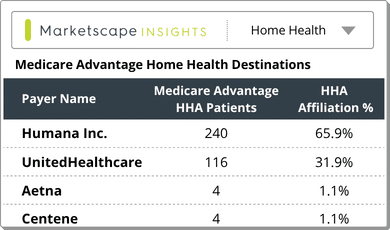Carter Bakkum, Senior Data Analyst, Healthcare Insights
Carter is a senior data analyst who works to turn complex, messy data into actionable intelligence. Carter studied economics and statistics at the University of Virginia before joining an economic consulting firm, where he supported expert testifying economic witnesses on behalf of fortune 500 healthcare companies. After the significant changes in the importance of data analytics during the pandemic, Carter joined the Trella team to dive deeper into the numbers to uncover the stories that drive our experience.Medicare Average Length of Stay by Line of Business
By Carter Bakkum | May 4, 2022
National average length of stay for inpatient, skilled nursing, home health, and hospice facilities

National average length of stay metrics can indicate how efficient a healthcare system is at sorting patients by acuity level. It’s essential, both financially and clinically, for hospitals to minimize average length of stay for patients so an inpatient ALOS that’s much lower than the ALOS for skilled nursing, home health, and hospice is unsurprising and a good sign. As the baby boomer generation ages into their late 70s and 80s, the U.S. healthcare system will see more elderly patients than ever before, making it essential to provide the best level of care for patients. In the last year, healthcare providers have faced substantial staffing issues, driven by the so-called “Great Resignation”, and have had to do much more with less.
Pre-pandemic national average length of stay by line of business
With the largest generation in the U.S. by births on the cusp of entering an age bracket that normally requires the most health care, placement of patients in the appropriate care setting is crucial. Encouragingly, hospice ALOS increased from 78.7 in the 2018 Q4 – 2019 Q3 time period, which indicates more Medicare beneficiaries than ever are taking full advantage of hospice benefits. However, trends from the last few years yield a worrying sign: inpatient ALOS is increasing. Between 2018 Q4 and 2019 Q3 the average length of stay for inpatient facilities was 7.1. A half of a day increase in the ALOS doesn’t seem like much but multiplied by the millions of inpatient stays in a year, this slight increase strains a healthcare system already on the brink. It’s crucial for post-acute care agencies to work with hospitals and health systems to lower inpatient average length of stay without compromising the quality of care and quality of life of Medicare beneficiaries.
Further investigations into post-acute care trends
This blog leveraged much of its information from Trella’s Industry Trend Report. For more insights on trends in the post-acute industry and how you can use data to drive strategic decision-making, download the full Industry Trend Report here. For more analyses into Medicare data and how data illustrates the importance of post-acute care and how to take advantage of changing healthcare, all my analyses are saved on my author page, linked here.













